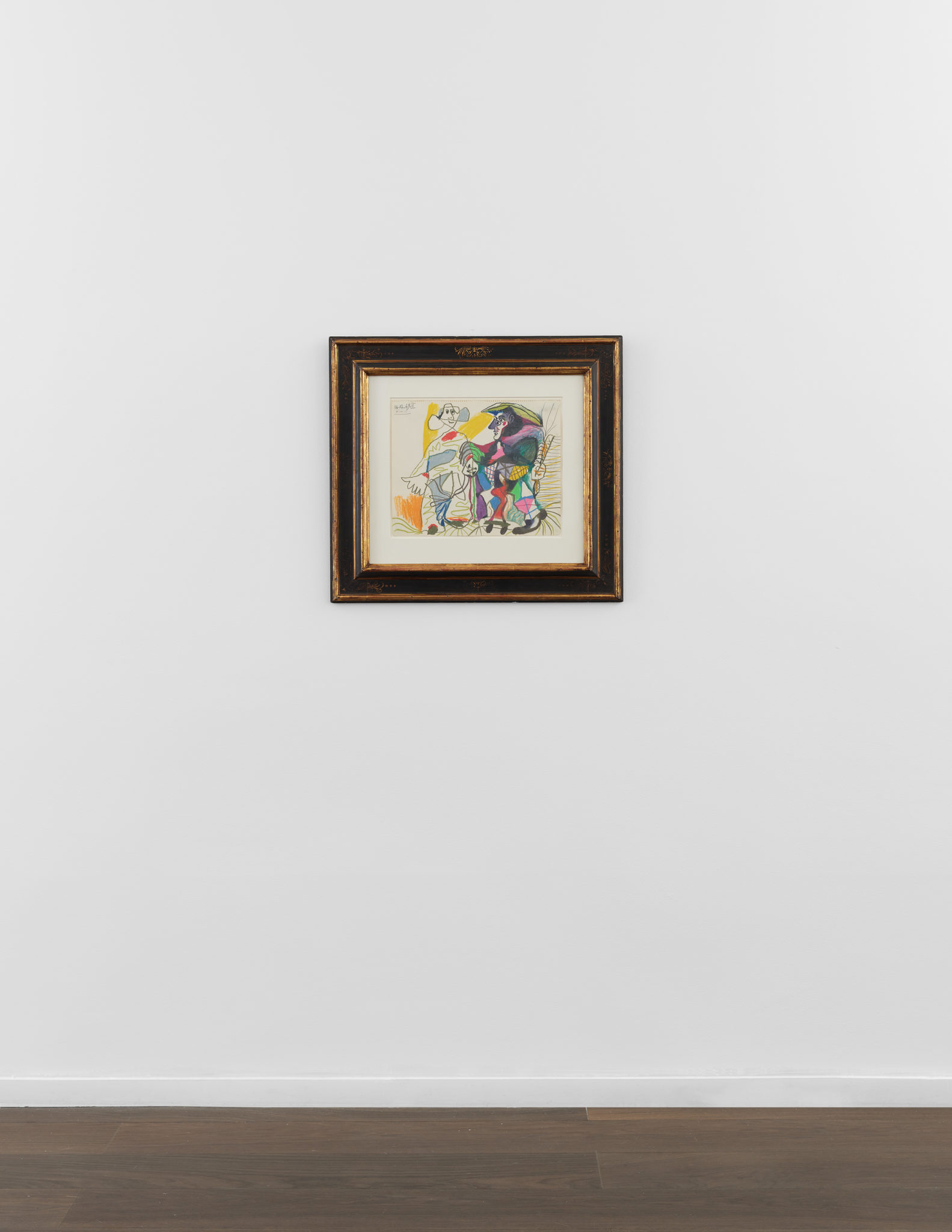Pablo Picasso
Pierrot et Arlequin, 1969
Colored chalk and crayon
12 3/4 x 16 1/8 inches (32.4 x 41 cm)
© Estate of Pablo Picasso / Artists Rights Society (ARS), New York
Photo: Elisabeth Bernstein
We give to form and color all their individual significance, as far as we can see it; in our subjects, we keep the joy of discovery, the pleasure of the unexpected.
—Pablo Picasso
The namesake figures of Pierrot et Arlequin (1969) are among Pablo Picasso’s most notable recurring cast of subjects, first appearing in his Rose period of 1904–06. Drawn with swerving lines of chalk and crayon, Picasso employed a range of vivid colors in Pierrot et Arlequin that recall his Rose period palette. Pink, violet, scarlet, and green delineate the classic diamond-patterned costume of the harlequin, a stock character in Italian commedia dell’arte. Pierrot, the harlequin’s rival in love, also sports traditional attire: a largely white ensemble whose curling contours suggest ruffles adorning his throat and wrists. The customary designs of their dress here serve to advance Picasso’s stylistic experimentation. As the art historian Theodore Reff observed, “For like a Cubist composition, the Harlequin’s costume of flat bright colors and strongly marked patterns both fragments and conceals the underlying forms, assimilating them to a surface design of great decorative brilliance.”
Picasso represented harlequins, clowns, and saltimbanques, or itinerant circus performers, in numerous guises throughout his career. Marked by a myriad of emotions, from whimsy and exuberance to melancholy and pain, these characters act as surrogates for the artist and those in his circles who likewise engaged in romance and camaraderie. The repertory of the commedia dell’arte proved to be a fruitful arena through which Picasso could explore these universal themes, and he would continue to be inspired by the diversions of the stage throughout his life. In his late 80s at the time he created Pierrot et Arlequin, Picasso turned again to the tragicomic personas who populate his early oeuvre, engaging anew his fascination with the drama of concealment and expression mastered by these iconic jesters.





